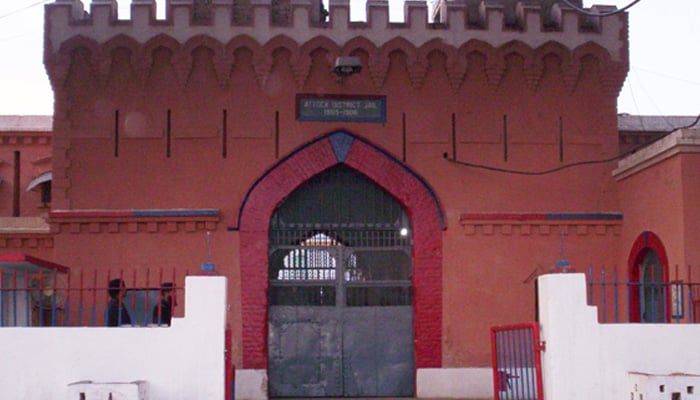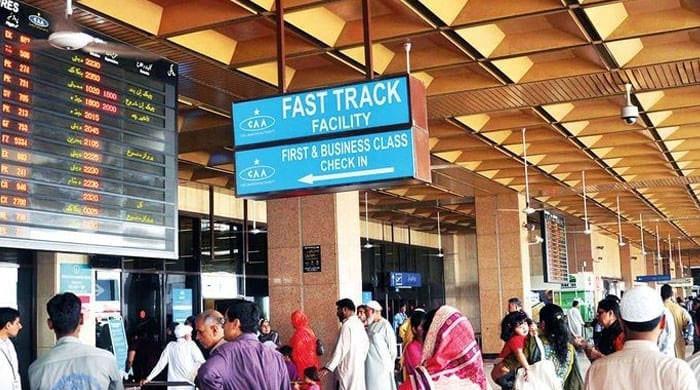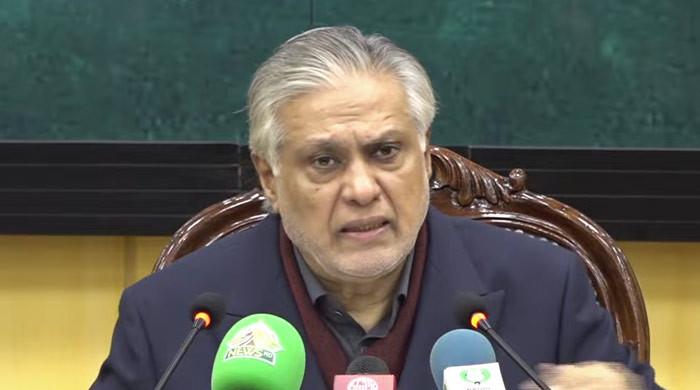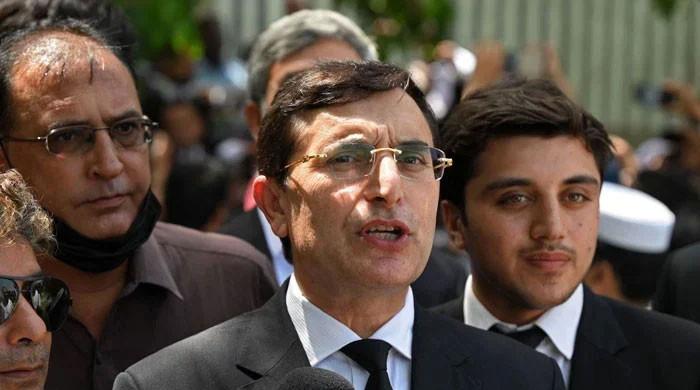Attock jail: What makes jail where Imran Khan was shifted post-conviction special?
Attock jail has served as a layover town for renowned figures such as Alexander the Great and Ibn-e-Battuta
August 06, 2023

LAHORE: Pakistan Tehreek-e-Insaf (PTI) Chairman Imran Khan has been handed out a three-year jail term by a trial court in Islamabad following the Toshakhana case for illegally selling state gifts.
Soon after the verdict was announced, he was arrested from his Zaman Park residence in Lahore and shifted to Attock jail — a historic prison where his political adversaries, including Pakistan Muslim League-Nawaz (PML-N) supremo Nawaz Sharif, Pakistan Peoples Party (PPP) Co-chairman Asif Zardari, and incumbent prime minister Shehbaz Sharif, had also been imprisoned in the past.
Attock, a northern town in Punjab, is located at the confluence of the Indus and Kabul Rivers. It was formerly called Campbellpur in honour of Field Marshal Colin Campbell, the commander-in-chief of British forces in the 19th century.
Throughout history, it has served as a layover town for renowned figures such as Alexander the Great and Ibn-e-Battuta, the legendary explorer who journeyed an impressive 117,000 km, the most extensive pre-modern exploration.
While Khan is imprisoned at the Attock jail, Nawaz, Zardari, and Shehbaz were made to languish in the nearby Attock Fort. The PML-N supremo was sentenced to 14 years of rigorous imprisonment at the Attock Fort compound on July 21, 2000.
An eminent British newspaper The Guardian reported: "Sharif, who was overthrown in a coup in October 1999, was also banned from holding public office for 21 years and fined 20 million rupees. He is already serving two life terms for hijacking and terrorism in connection with the military takeover, and he condemned the verdict as a personal vendetta led by the military.”
The media house had added: "Nawaz was found guilty of failing to pay tax on a £600,000 Russian Mi-8 helicopter which he leased and then bought in October 1993 and used for electioneering. Despite being one of Pakistan’s richest men, Sharif paid no income tax in the year 1994-95, the accountability court heard, because he claimed all his income was from agriculture, which until now has never been taxed in Pakistan.
...prosecutors charged him with tax evasion for failing to declare income used to buy and develop his lavish £2.9 million, 100-acre family estate in Raiwind, near Lahore. The trial was the first civilian case to be heard in the 16th-century Attock Fort, which has been used for at least three military courts- martial for attempted coups.”
Zardari, the former Pakistani president and the widower of a two-time former premier Benazir Bhutto, had also spent almost half of his imprisonment period of seven years at the Attock Fort.
On February 15, 2002, Zardari was produced before an accountability court judge, Farrukh Latif, at the Attock Fort premises in an illegal assets reference.
His worst political foe and best political ally of today, Nawaz, had registered dozens of cases against him before sending him to the Attock Fort.
PM Shehbaz and Hussain Nawaz, Nawaz's elder son, were also kept in this fort in separate barracks and were made to face accountability trials here in this building.
The Attock Fort is located in the middle of a jungle where deadly snakes and scorpions are common. According to media reports surfacing about 23 years ago, once a deadly snake had reportedly crept into Nawaz Sharif’s cell and was about to bite him when a security guard killed the venomous reptile.
Renowned political figures like PTI Vice Chairman Shah Mehmood Qureshi, Sardar Mehtab Abbasi — the former chief minister of Khyber Pakhtunkhwa, then referred to as the North Western Frontier Province, former federal communications minister, Azam Khan Hoti, and Dr Farooq Sattar, a Muttahida Qaumi Movement-Pakistan leader etc, have all enjoyed the traditional hospitality of the men controlling this majestic fort, which was constructed between 1581 and 1583 during the reign of Mughal Emperor Akbar, who had initially named this town as “Attock-Banaras.”
The 118-year-old Attock jail was built on land measuring 67 acres, six kanals and 12 marlas.
According to the website of the 169-year-old Punjab Prisons Department, the area of this jail’s building measures 17 acres, while the prison’s colony is spread over 26 acres, two kanals and 12 marlas, and its agricultural land spans over 22 acres and four kanals. The area of barren land on this facility is two acres.
While the authorised accommodation of this jail is for 539 prisoners, not fewer than 804 prisoners are confined here. Attock jail is one of the 40 prisons currently functional in Punjab. A British officer, Dr C Hathaway, was the first inspector general of prisons posted here.
At the time of independence, Punjab had inherited 19 jails, whereas 21 more prisons had been commissioned after 1947. It was also at this Attock Fort that the trial of various officers of the country’s armed forces was held in 1973 and then in 1985.
Eminent lawyers like Manzur Qadir, SM Zafar, Ijaz Hussain Batalvi, Aitzaz Ahsan and Wasim Sajjad have been defending the disgruntled officers of armed forces in these Attock Fort trials.
All of these solicitors had gone on to win a lot of glory and acclaim in the decades that followed.
A large number of army and air force officers were reportedly arrested in the “1973 Attock Conspiracy Case” on March 30 of the same year on charges of conspiring to overthrow the government of former premier Zulfiqar Ali Bhutto.
The detainees at Attock included Major Nadir Pervez, who later became a federal minister in one of the Nawaz Sharif governments. These officers felt Bhutto’s refusal to accept Sheikh Mujibur Rehman’s election victory in 1970 had led to resentment, which ultimately resulted in their loss in the 1971 war with India.
Dozens of armed services personnel, along with some civilians, lawyers and police officers, were also arrested in January 1984. Many of them were interrogated and subsequently released.
They were charged by Special Military Court Number 64 with plotting to ‘wage a war’ against the General Zia-ul-Haq regime and conspiring to commit sedition by holding meetings and publishing subversive literature. They were also charged with colluding to assassinate Zia and blow up strategic state and army installations.
These January 1985 trials had ended in the acquittal of 12 people, including that of noted Barrister, Raza Kazim. The government claimed it had uncovered a ‘foreign-inspired’ plot to smuggle arms from a ‘neighbouring country’ aimed at ‘subversion’ and ‘terrorism.’
Originally published in The News









